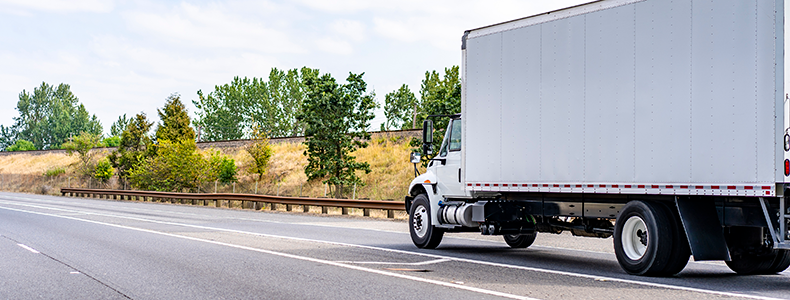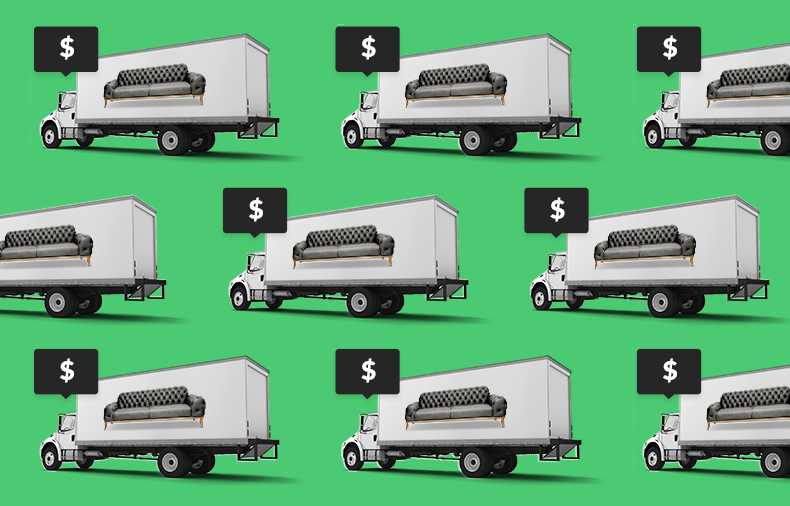In a recent uShip survey done in partnership with Worldwide Business Research, we mined a treasure trove of information about how businesses handle oversized returns. Based on the information gathered from over 100 logistics leaders across the US and Canada, we learned a lot about the state of returns.
One massive takeaway is the need for automation and digitization in oversized returns. As you know, returns present a revenue challenge; buyers should have the right to return, within reason, oversized items. But where is the line, and how do you protect your margins? One way is by implementing new digital tools that help inject efficiency into your operation and partnering with the right return shipping provider to make it all happen.
Large and bulky returns in the retail space present an ever-present challenge. The nature of these returns requires special equipment, people, and skills to get the return back to you efficiently and with low to no damage incurred in transport. Here, we’ll look at how modern tools and key partnerships can be the game changer you need to build returns into the asset it can be.
The Role of Automation in Streamlining Retail Logistics

In the report mentioned earlier, we found that only 42% of those surveyed said they were somewhat satisfied with their ability to track delivery speed in their oversized returns. Taken another way, 58% are unhappy in this area.
When you implement automation through digital tools, like AI, visibility into these issues starts to bubble up to the surface. Not only do you get an initial bump in productivity from the tools themselves, but you’ll uncover new areas of improvement and efficiency. What’s more, when you partner with return shipping experts at uShip, you get unparalleled levels of visibility into your oversized return shipping costs and transit times..
Beyond tracking and delivery speeds, automation tools can help in other areas:
- Inventory Management: Automation, powered by AI, proves indispensable in optimizing inventory levels. For large and bulky items, precision in tracking becomes even more critical. These items often take up serious warehouse space, so being able to plan for that is key. Real-time tracking and analytics offer actionable insights, ensuring better control over inventory, especially when dealing with the unique challenges of oversized products.
- Order Processing: The acceleration of order fulfillment is a significant benefit of automation, alleviating some of the challenges associated with managing returns of large items. Robotics and AI algorithms can improve order accuracy and expedite the processing of orders, even when dealing with the complexities of bulkier merchandise. Accurate orders directly contribute to fewer returns in the first place.
- Warehouse Management: Automated warehouse systems, integrating robotics and AI, enhance warehouse management. For retailers dealing with large and bulky items, the challenges of storing and retrieving are addressed through automated solutions, optimizing processes in the storage and movement of oversized products. When it’s time to get orders off the dock or when a return happens, these same tools can help, too.
Digitization for Enhanced Transparency
Only 61% of the surveyed leaders said they’re satisfied with their ability to track truck types and capacity for large and bulky returns. This is inexcusable. That visibility is often the difference between hitting and missing goals.
Transparency is key in reverse logistics. Knowing when something is picked up, where it is at any given moment, and when to expect it back at your warehouse or store is key to building those efficiencies into your process. Not only does it help make things go smoother, but it also allows you to anticipate issues in the chain should they occur.
- Real-time Tracking: The impact of real-time tracking on supply chain visibility is profound. For oversized items, tracking becomes even more critical to ensure the efficient movement of these larger products through the logistics chain.
- Data Analytics: Data analytics, facilitated by digitization, aids in predicting and preventing returns. AI-driven analyses of customer behavior contribute to improved product recommendations and a more tailored customer experience, addressing the specific challenges posed by large and bulky items. With the right analytics, you gain insight into why returns are happening in the first place.
This all boils down to cost savings in labor and operational expenses. Coupled with the right return shipping partner (that’s uShip, BTW), you give your team the transparency and efficiency they need to move quickly. This means more revenue.
Also, when you provide a stellar return experience for your buyers, you instill customer loyalty. In fact, 95% of buyers with a good return experience say they will buy from that retailer again.
Overcoming Implementation Challenges
Implementing the abovementioned changes can seem like lifting an elephant onto a swing set. Sure. Maybe with the right tools and people in place, you can do it…but once it’s up there, you have to swing the elephant. Weird metaphor, right?
But it’s true. It feels daunting anytime change is implemented, but this shouldn’t stop you from it because the upsides are enormous (pun intended…you know, because elephants are big).
These challenges can be even more pronounced for retailers dealing with large and bulky items. Understanding and effectively addressing these hurdles is crucial for transitioning to a more efficient and streamlined logistics system.
- Integration Complexity: In the oversized product space, the intricacies of incorporating automated solutions seamlessly into your current operations can be daunting. Overcoming this challenge involves meticulous planning, often requiring the expertise of IT professionals to ensure a smooth integration that doesn’t disrupt day-to-day operations.
- Employee Training: The introduction of automation often necessitates a shift in the roles and responsibilities of employees. Training the workforce to adapt to new technologies is crucial to successful implementation. For retailers dealing with the complexities of oversized returns, ensuring that employees are adept at handling automated systems becomes even more imperative. Proper training programs need to be established to equip the workforce with the skills needed to manage the intricacies of large and bulky item returns efficiently.
- Initial Investment Costs: While the long-term benefits are significant, the initial costs associated with implementing automation and digitization can be a barrier, particularly for retailers managing large and bulky items. Overcoming this challenge requires a careful cost-benefit analysis, highlighting the potential savings and operational efficiencies that will be realized over time. For retailers dealing with oversized products, understanding the return on investment becomes paramount in justifying the initial financial outlay. What’s more, building out the right logistics models to enhance these systems can be costly, but with uShip, they don’t have to be.
One area that doesn’t have to be a barrier is the return shipping component. When you partner with uShip, ducks just line up — getting those large and bulky returns back in-house gets easy AND becomes cost-effective. Our marketplace offers competitive rates so you know you’re getting the best deal out there.
Another benefit of using uShip? We have the lowest damage rates in the industry. Our first-to-final mile model minimizes touchpoints where damage is often incurred.
We also offer a curated suite of professional carriers harbored in our In-Home Delivery program. If you’re shipping bulky items regularly, the benefits to both you and your customers are massive. Find out more here.
The Bottom Line

Retailers need more visibility and transparency for their teams to move quickly. This allows them to greater affect the bottom line. To do it correctly, businesses need to implement new tech and broaden how they’re moving large and bulky items to elevate how profit can be obtained from an effective return system. By doing this, you can break the mold that 68% of our respondents echoed when they highlighted that they recover less than 50% of the original sale price on returned goods.
By being stuck in the old ways of doing things, you’re also relegating your profits to less fruitful endeavors.
When you’re ready to improve your large and bulky return process, we’re here to help.



